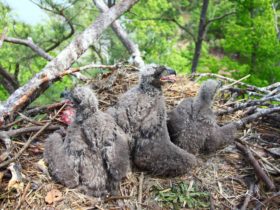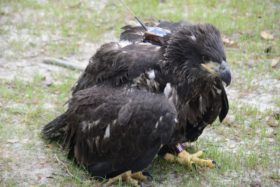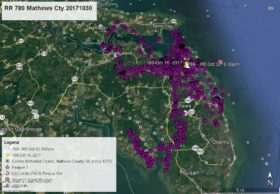Building flight muscles
Eagle HH (Azalea) wearing a transmitter
May 21, 2009Branching has begun
May 28, 2009
Categories
 May 21 saw the two oldest eaglets HK (the one with all the white feathers) and HH (with transmitter) flapping their wings and jumping from one side of the nest to the other. Building flight muscle. The youngest eaglet (HE) just watched. What’s next? Branching. Stepping out of the nest onto the surrounding tree branches. Perhaps today. Hope you are watching.
May 21 saw the two oldest eaglets HK (the one with all the white feathers) and HH (with transmitter) flapping their wings and jumping from one side of the nest to the other. Building flight muscle. The youngest eaglet (HE) just watched. What’s next? Branching. Stepping out of the nest onto the surrounding tree branches. Perhaps today. Hope you are watching.




4 Comments
Saw on the forum that folks are curious about the gender of each of the three eagles. Can you tell us which is which?
We have determined the sex of the 3 eaglets as follows:
Hatched 3/21/09 Band HK Male
Hatched 3/22/09 Band HH Female (Azalea)
Hatched 3/25/09 Band HE Female
I’m curious about feather development and flight. You mentioned at transmitter placement the nestling’s tail feathers were 80% developed. Is branching and fledging affected by the fact the tail feathers aren’t fully developed yet? Thanks.
Re: tail feathers
By the time the eaglets fledge the tail feathers (rectrices) will be fully grown. Each of the three eaglets will show a different pattern of white splotches in their rectrices and be one way to tell who is who once they take flight. So far HK, the male and oldest is showing the most white.